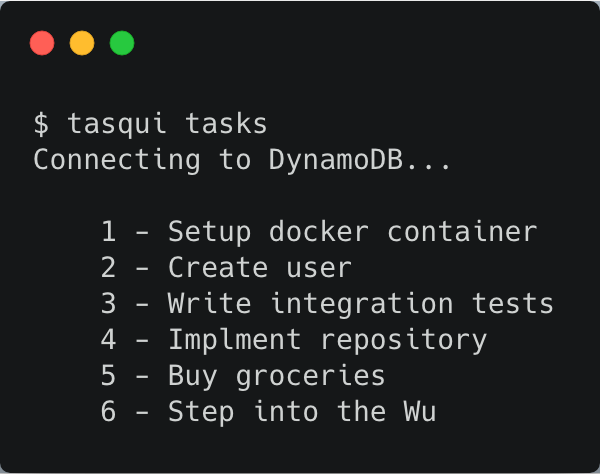
- Por André Guelfi Torres
- ·
- Publicado 13 Feb 2019
In a previous post I showed you how to create and deploy an AWS Lambda. We will continue that work and look at updating just the code for that lambda. We will also add a REST endpoint to the AWS Lambda using AWS API Gateway.
So before you continue ... if you haven't already, please follow the instruction in the previous post to make sure you have a running AWS Lambda instance.
Paste the following in update-lambda.sh
#!/bin/bash
### Create the lambda package
zip -j helloworld.zip *.py
function_name="helloworld"
package_file=helloworld.zip
### Update the lambda code
aws lambda update-function-code \
--function-name $function_name \
--zip-file fileb://$package_file
or for Java
#!/bin/bash
### Create the lambda package
mvn package
function_name="helloworld"
package_file="target/lambda-java-example-1.0-SNAPSHOT.jar"
### Update the lambda code
aws lambda update-function-code \
--function-name $function_name \
--zip-file fileb://$package_file
Make the script executable chmod +x update-lambda.sh and update your lambda ./update-lambda.sh.
Now that we know how to update the lambda in the cloud, lets make a change so we can pass something as a parameter. Rather than saying "hello world!" we want it to say hello to whomever.
In Python:
def lambda_handler(event, context):
return "Hello {}!".format(event['to'])
or like the following in Java:
package example;
import com.amazonaws.services.lambda.runtime.Context;
public class Hello {
public String lambdaHandler(Request request, Context context) {
return "Hello " + request.getTo() + "!";
}
}
class Request {
private String to;
public void setTo(String to) { this.to = to; }
public String getTo() { return to; }
}
aws lambda invoke --invocation-type RequestResponse --function-name helloworld --payload '{"to": "whomever"}' output.txt
You should see Hello whomever! in output text
Paste the following script into a file such as create-api.sh, change permissions for the file to execute, and execute the script. Take a deep breath ...
Note: this script expects the AWS_REGION and AWS_ACCOUNT_ID environment variables to be defined
#!/bin/bash
set -e
region=$AWS_REGION
account_id=$AWS_ACCOUNT_ID
echo "Creating a new API and capturing it's ID ..."
api_id=$(aws apigateway create-rest-api \
--name HelloWorldAPI \
--description "Hello World API" \
--output text \
--query 'id')
echo "> API ID is: $api_id"
echo "Storing the API ID on disk - we'll need it later ..."
echo $api_id > api_id.txt
echo "Geting the root resource id for the API ..."
root_id=$(aws apigateway get-resources \
--rest-api-id "${api_id}" \
--output text \
--query 'items[?path==`'/'`].[id]')
echo root_id=$root_id
echo "Creating a resource for the /hello path"
resource_id=$(aws apigateway create-resource \
--rest-api-id "${api_id}" \
--parent-id "${root_id}" \
--path-part hello | jq -r .id)
echo "Resource id is $resource_id"
echo "Creating the GET method on the /hello resource"
aws apigateway put-method \
--rest-api-id "${api_id}" \
--resource-id "${resource_id}" \
--http-method GET \
--authorization-type NONE
echo "Integrating the GET method to lambda. Note that the request tempalate uses API Gateway template language to pull in the query parameters as a JSON event for the lambda."
aws apigateway put-integration \
--rest-api-id "${api_id}" \
--resource-id "${resource_id}" \
--http-method GET \
--type AWS \
--request-templates '{ "application/json": "{\n #foreach($param in $input.params().querystring.keySet())\n \"$param\": \"$util.escapeJavaScript($input.params().querystring.get($param))\" \n #end\n }" }' \
--integration-http-method POST \
--uri arn:aws:apigateway:${region}:lambda:path/2015-03-31/functions/arn:aws:lambda:${region}:${account_id}:function:helloworld/invocations
echo "Creating a default response for the GET method"
aws apigateway put-method-response \
--rest-api-id "${api_id}" \
--resource-id "${resource_id}" \
--http-method GET \
--status-code 200
echo "Creating a default response for the integration"
aws apigateway put-integration-response \
--rest-api-id "${api_id}" \
--resource-id "${resource_id}" \
--http-method GET \
--status-code 200 \
--selection-pattern ".*"
echo "Adding permission for the API to call the lambda for test so we can use the console to make the api call"
aws lambda add-permission \
--function-name helloworld \
--statement-id apigateway-helloworld-get-test \
--action lambda:InvokeFunction \
--principal apigateway.amazonaws.com \
--source-arn "arn:aws:execute-api:${region}:${account_id}:${api_id}/*/GET/hello"
echo "Adding permission for the API to call the lambda from any HTTP client"
aws lambda add-permission \
--function-name helloworld \
--statement-id apigateway-helloworld-get \
--action lambda:InvokeFunction \
--principal apigateway.amazonaws.com \
--source-arn "arn:aws:execute-api:${region}:${account_id}:${api_id}/api/GET/hello"
echo "Creating a deployment"
aws apigateway create-deployment \
--rest-api-id "${api_id}" \
--stage-name api
echo "All done! you can invoke the api on https://${api_id}.execute-api.${region}.amazonaws.com/api/hello?to=whomever"
The last output of the scripts provides the URL that you can paste into the browser. You should see the response "Hello whomever!" once you hit enter in the brower.
You can use the delete.sh script created in the previous post to delete the lambda. To delete the api: Paste the following script and execute as as per usual.
#!/bin/bash
echo "Reading API id that I store in my create-api script"
api_id=$(<api_id.txt)
echo "Removing the permissions from the lambda"
aws lambda remove-permission \
--function-name helloworld \
--statement-id apigateway-helloworld-get
aws lambda remove-permission \
--function-name helloworld \
--statement-id apigateway-helloworld-get-test
echo "Deleting the API"
aws apigateway delete-rest-api \
--rest-api-id "${api_id}"
... for now!!!



Software es nuestra pasión.
Somos Software Craftspeople. Construimos software bien elaborado para nuestros clientes, ayudamos a los/as desarrolladores/as a mejorar en su oficio a través de la formación, la orientación y la tutoría. Ayudamos a las empresas a mejorar en la distribución de software.